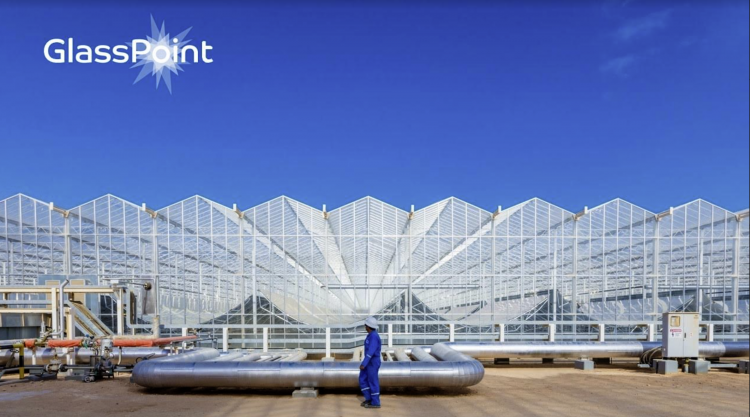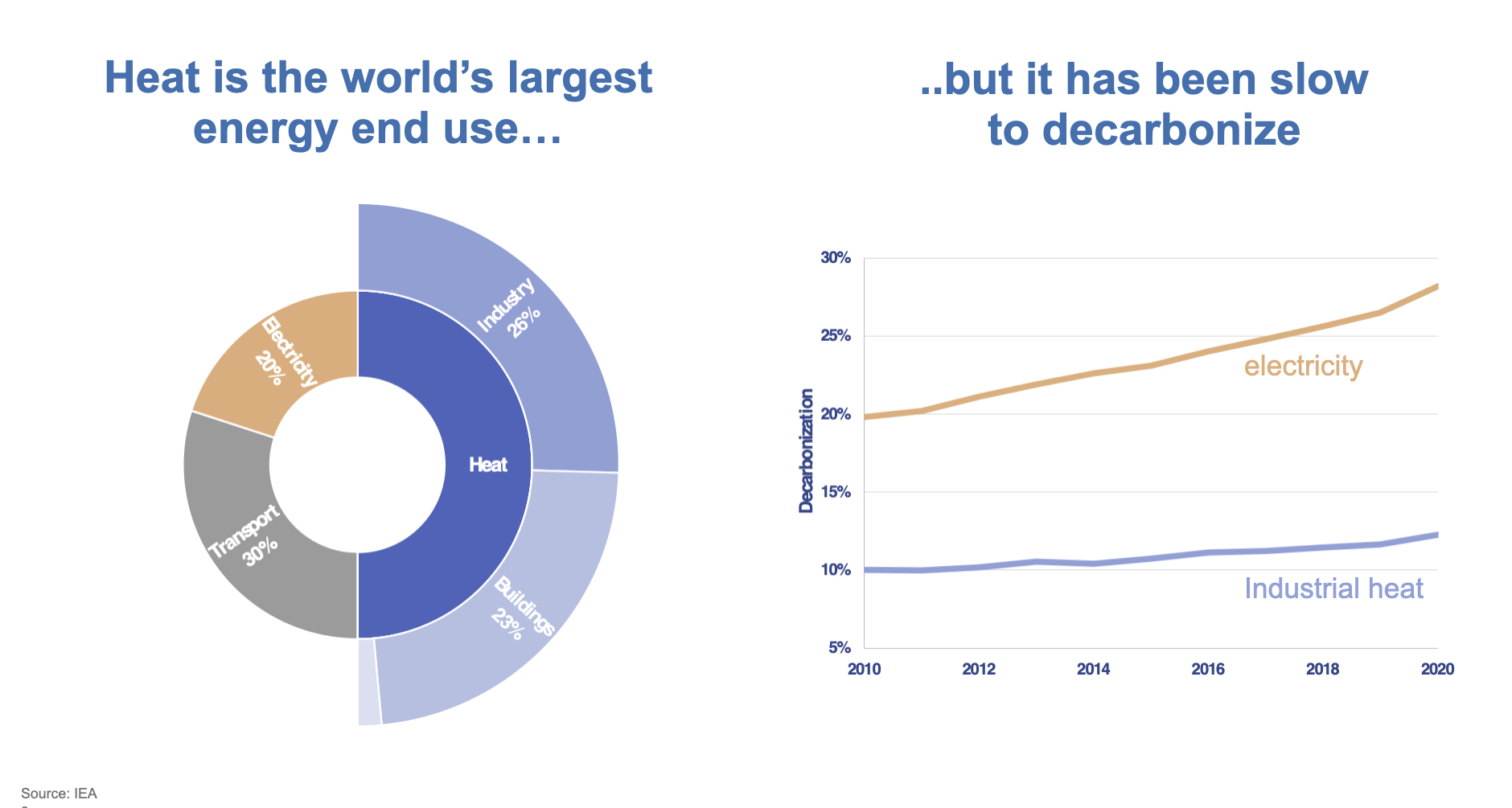
“Now a lot of our pipeline of companies that we’re in discussion with is in Australia, where electricity prices are high, so electrifying is just far too expensive,” he said.
Ten years ago, GlassPoint CEO Rod MacGregor bucked the typical business plan for solar developers, both PV and CSP (How CSP works): Sign an electricity contract with an electric utility to sell your solar power by the kilowatt-hour for 25 years and try to get financing and transmission lined up before the utility gives up waiting and cancels.
Unlike other CSP developers, MacGregor proposed instead to tap the “deep pockets” of oil firms that could buy an entire 1,000-megawatt solar steam-making project outright rather than negotiate a contract with a utility always under pressure to procure the cheapest renewable energy quickly.
His novel approach made sense. Unlike the other solar; PV, concentrating solar power (CSP) projects generate steam – to then make electricity – in a thermal power station from highly concentrated sunlight. Steam has important applications across many industrial markets, including oil, and it is far more efficient to produce steam directly rather than converting to heat from electricity.
GlassPoint innovated the concept of simply using that hot solar steam directly
By 2015, MacGregor had landed the first project. All went well initially. GlassPoint sold a record-breaking 1 GW steam generating plant Miraah to Petroleum Development Oman (PDO) in Oman and won the SolarPACES Innovation Award in 2016. PDO wanted solar steam to replace natural gas steam for Enhanced Oil Recovery (EOR), which involves injecting steam into dwindling oil well bores to push out the last oil.
But their subsequent California oil project fell through in the end, and GlassPoint seemed grounded, with none of the ongoing revenue developers have in a multi-decade solar contract. “At that time, we were focused almost exclusively on oil and gas, which is a cyclical industry. If you remember, oil prices briefly went negative. At that point, all the customers stopped and said, Well, we’ll pause. So you have a company sized to execute mega projects with over 300 employees but no recurring revenue. We ran out of cash,” MacGregor explained.
The oil industry’s deep pockets turned out to have had quite deep holes too. But the market suddenly shifted to wiser steam applications, and new opportunities arose in decarbonization.
“The original institutional investors contacted me again,” said MacGregor. “And they said, Would you like to come back and restart? We’re going to recapitalize the company. Our main change was to change the business model to selling steam as a service instead of selling the equipment, and I jumped at the chance.”
Now GlassPoint’s steam decarbonization is an option for a wider range of industries
The revised business model would enable a much wider range of industries to decarbonize their operations, not just a few able to buy a GW-scale solar project outright. For GlassPoint as the system operator, this would also make ongoing learning possible, which they don’t have from their massive project in Oman.
“This was another driver for changing the model,” he said. “ After the confirmation of our performance and fine tuning of our performance models after commissioning we don’t receive any ongoing data on the Oman project, because the business model at that time was that it’s now their system. But you want to be still involved in these systems as they go forward. We only have anecdotal information even though the plant is running well.”
Perhaps the neighbors had some anecdotal information, too, because the resurrected GlassPoint had their first new customer, a Saudi firm next door to Oman, looking for a 65% reduction in carbon by using solar steam to refine bauxite ore into alumina, the main component of aluminum.
The aluminum refinery Ma’aden signed up to tap steam from an even larger Glasspoint solar steam project in Saudi Arabia. At 1.5 GW, the world’s largest solar process heat plant, this beats even the original 1 GW Oman project, itself a record-breaker.
“We’ve been expanding away from enhanced oil recovery into process heat more generally,” MacGregor noted. “That bauxite alumina phase is very energy intensive and uses a lot of steam, and the conditions are very similar – remote, rugged locations. So it’s a pretty good fit for us. Our current focus is on metals related to the energy transition — aluminum, copper, lithium — because those customers are under tremendous pressure to decarbonize.”
By switching to steam as a service, GlassPoint is resurrected
With the new direction, Markus Balz at schlaich bergermann partner (sbp) got interested, too, noting that GlassPoint has already proved that by capitalizing on the efficiency of direct solar heat, it is a company that can supply industrial decarbonization at a huge scale. For Balz, now GlassPoint’s Chief Technology Officer, this was a chance to go bigger, faster.
MacGregor liked that Balz has expertise in everything from the technical aspects of designing solar technologies to the actual manufacturing and construction processes required to scale solutions internationally. He has been the recipient of multiple innovation awards.
“It’s really a winning story for me,” Balz confirmed. “There were many reasons to join. I think that is the thrill with it, to push things faster than I’m used to. And this was a perfect opportunity to join this team, have a real impact on CO2 reductions, and get a cool technology into the market.”
Building on the original greenhouse shape in Oman, Glasspoint’s new rounded enclosure also can use the same automated washing commercially available for fruit and vegetable growers while delivering improved efficiency.
For operating overnight, which is essential for most industrial processes, GlassPoint had already been incorporating thermal energy storage. A heat exchanger transfers the steam to store the heat in molten salts.
The steam temperatures that they can supply range from 80C to 450C, with pressures at around 100 bar.
Counterintuitive economics
MacGregor pointed out that in a traditional CSP project, the trough collectors are spaced further apart, not just for cleaning vehicle access but because “mirrors and troughs are expensive compared to land. Land is cheap. And so you don’t want one trough to cast a shadow on the one behind it. So only about 1/3 of the ground is covered by a conventional trough.”
But for GlassPoint, the economics are reversed: “You can’t send steam 1000 miles or even 100.” Land is much more expensive, close to the industrial and factory sites where they would supply the heat as solar steam.
So due to the enclosure and high land cost his large but much lighter and cheaper collectors are packed denser together, even though that allows a little shading.
“A lot of our colleagues initially thought we were crazy. You pay for the trough, you pay for the building – and you allow efficiency loss with some shading! But the big advantage is you reduce costs enormously and create a very high solar output at minimal land requirement.”

Solar steam produced directly, rather than diverting solar energy through electricity first, could finally start to decarbonize heat for industries
Australia next for GlassPoint’s direct solar heat
Australian heavy industry has already been in serious partnerships with solar thermal researchers to find ways to decarbonize industrial processes using solar heat.
Around the time of the Ma’aden MOU to decarbonize their alumina refinery, former Alcoa COO Tómas Sigurðsson and the former Australian PM Malcolm Turnbull joined the firm’s advisory board.
“A lot of our pipeline of companies that we’re now in discussion with is in Australia, where electricity prices are high, so electrifying is just far too expensive,” he said.
Direct solar heat makes more sense for these industries needing to decarbonize. Even a conventional CSP project is about three times more efficient in terms of land use energy capture than PV, MacGregor noted.
“And then also, CSP is much more efficient in delivering heat than electricity. Normally with CSP, you’re thinking about the sunlight-to-electricity conversion ratio, which is relatively low because of the turbine. But if you’re only making steam, you have that land advantage of normal CSP – and then some!”
Australian Researchers Assess the Commercial Viability of Solar Alumina Calcining
Australian Researchers Assess the Commercial Viability of Solar Alumina Calcining
1,500 MW of Glasspoint Solar Steam to Decarbonize Saudi Aluminum Production














































